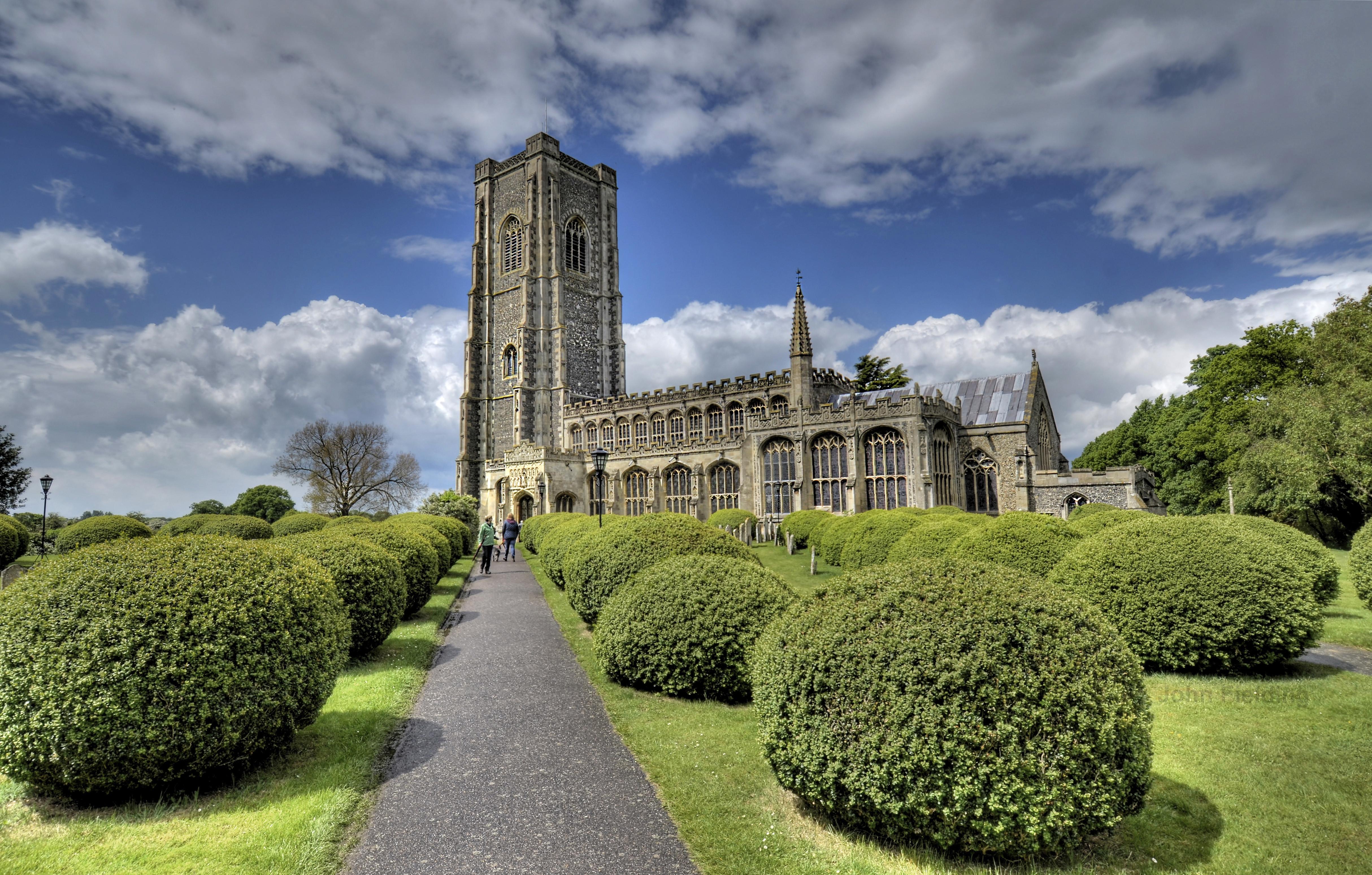St Mary
Brent Eleigh, Suffolk
Just one mile east of the tourist hotspot of Lavenham, St Mary’s possesses hidden gems with the earliest and finest set of altar wall paintings in England (according to experts).

Town and church are world famous for their beauty and that there is a breathing space of countryside beyond the church adds to the pleasure of the setting.
Lavenham, Suffolk
For about 150 years, between the end of the 14th century and the middle of the 16th, Lavenham was one of the richest town's in Britain.
Many of Lavenham's splendid timber framed buildings date from this prosperous period, as does the church. The church itself was built, or rather rebuilt, partly in celebration in the years immediately following the Tudor victory at the Battle of Bosworth, in 1485. The instigator was John de Vere, 13th Earl of Oxford, one of the most powerful men in England. Lavenham was one of his many estates in East Anglia. He worked on the church in partnership with Lavenham's richest clothiers, particularly the Spring family.
Work began with the stupendous tower, built of flint faced with limestone imported from Northamptonshire. Set into the tower, and clearly visible from the ground, is the de Vere star, one of their symbols. The other de Vere symbol, a wild boar, can be seen in the south porch and in the nave.
Next to be rebuilt was the nave; the only feature left from the 14th century nave was the rather odd spirelet, kept to hold the Sanctus bell. The chancel was also not rebuilt, and retains its fine 14th century arch.
The glory of the interior is the nave, with its elegant piers and fine 15th century roof, the rare 14th century chancel screen, and the screens at the ends of the aisles. These two parclose screens are outstanding. The north one, made in the 1520s, is the finest, and was built by the Spring family. It has wonderful, intricate wood carving. The south screen is less elaborate and was built by the Spourne family.
There are excellent misericords in the chancel. They include musicians, a jester, and an ibis and a spoonbill, reminders that East Anglia in the Middles Ages was very much wilder and wetter than it is now, and these two birds, very rare in Britain today, were common then.
Brent Eleigh, Suffolk
Just one mile east of the tourist hotspot of Lavenham, St Mary’s possesses hidden gems with the earliest and finest set of altar wall paintings in England (according to experts).
Monks Eleigh, Suffolk
Long Melford, Suffolk
Setting and position play a crucial part in the impact of the building and Long Melford's Holy Trinity is perhaps the finest example of this.